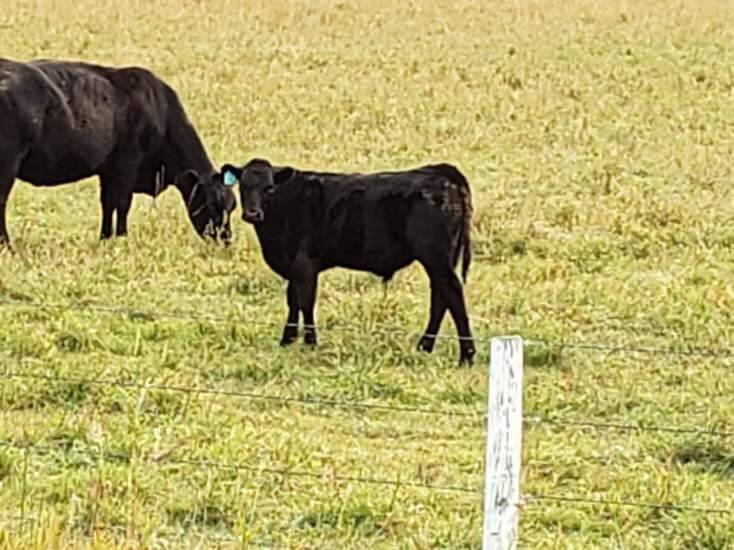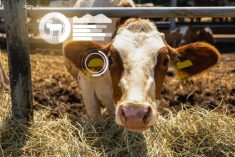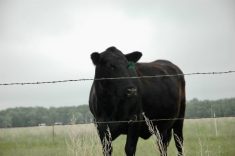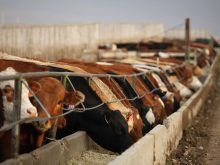Many calves are still “truck weaned” as a low-cost management option, but it is a wasteful and outdated practice.
It often costs the seller and/or the buyer a lot of money. Fortunately, better weaning methods are available compared to the abrupt removal of calves from their mothers. These better weaning alternatives are effective in reducing weaning stress in sold calves as well as putting more money in everybody’s pocketbook.
It’s no secret that the immunity/health status of truck-weaned calves is compromised compared to calves put through good weaning programs weeks ahead of the actual weaning. Reliable field data reports that many stressed-out calves never fully recover from truck weaning and suffer from significant rates of pneumonia and dysentery within weeks of being put in a feedlot. High mortality rates are also recorded.
Read Also

Managing through market or individual stock declines
Even the best of public-traded companies can periodically experience significant drawdowns, and a successful investor should be prepared to react — or not react — accordingly, Herman VanGenderen writes.
Truck-weaned calves suffer more shrinkage than pre-conditioned calves once they reach the feedlot. In today’s market, where prices seem to hit new highs each week, a 650-pound truck-weaned calf that loses an extra six per cent — about 39 lb. — at $550 per cwt is worth about $200 less than a properly weaned pen mate.
Much of this stress in truck-weaned calves is due to breaking the instinctive maternal bond between cow and calf. The University of Saskatchewan demonstrated that when cow-calf pairs in a herd were split in half and each group of cows was given the other group’s calves following weaning, both cows and calves kept searching for their own partner. Before separation, many of these calves were spending little time nursing on their dams (at six months of age, calves receive less than 15 per cent of their nutrient requirements from their dam’s milk). But after separation, it was proved that the cow still provides comfort to her calf.
Slowly breaking this maternal bond between mother and calf during weaning can be employed in the following ways, which not only reduces stress but also gets calves familiar with a new diet and a foreign environment:
- Complete separation: Put cow-calf pairs in the same feedlot pen for a few days to a week. Once the calves get used to the feed bunks and waterers, move the cows out.
- Fence-line weaning: Separate cows and calves by a fence, which prevents them from touching one another but allows visual contact to reduce stress on both sides of the fence.
- Two-step weaning: A method developed by the University of Saskatchewan that outfits each nursing calf with a nose “anti-nursing” device for about seven to 10 days before calves and cows are separated.
- Early weaning: This is a method that can employ each one of the above methods in one way or another, where calves are weaned at four to five months of age (and as early as six weeks of age).
A friend of mine who runs about 400 cow-calf pairs takes a different approach when it comes to weaning his calves in late fall. He believes the key to good weaning is to fill up the calves’ bellies a few weeks before they are actually separated from the cows.
At this time, the carrying capacity of his pastures is low, and there might even be a little snow on the ground. So he makes up a brood-cow TMR, which contains a lot of barley silage, some grassy hay, no grain and a well-balanced trace mineral-vitamin pack.
Then, he dumps this load right on pasture in front of the cow-calf pairs. It takes only a couple weeks of doing this and then these filled-up calves are removed from pasture and put into my friend’s home feedlot to be backgrounded until late February. One or two calves may bawl for a day, but most of them have already nicely adjusted once the feedlot pen gates are closed.
My friend has gone through many successful weaning seasons. It is a great testimony of reducing autumn calf stress, not only when they are taken away from their mothers and weaned but it also helps them get onto new feeding programs in a usually strange new environment. Such challenges may never be eliminated, but using this or similar common-sense approaches goes a long way. And today’s saleable weaned calves, bid at more than $500 to $700 per cwt, are just too valuable to be truck-weaned.
















